Golf Irons Explained: The Ultimate Guide to Golf Irons
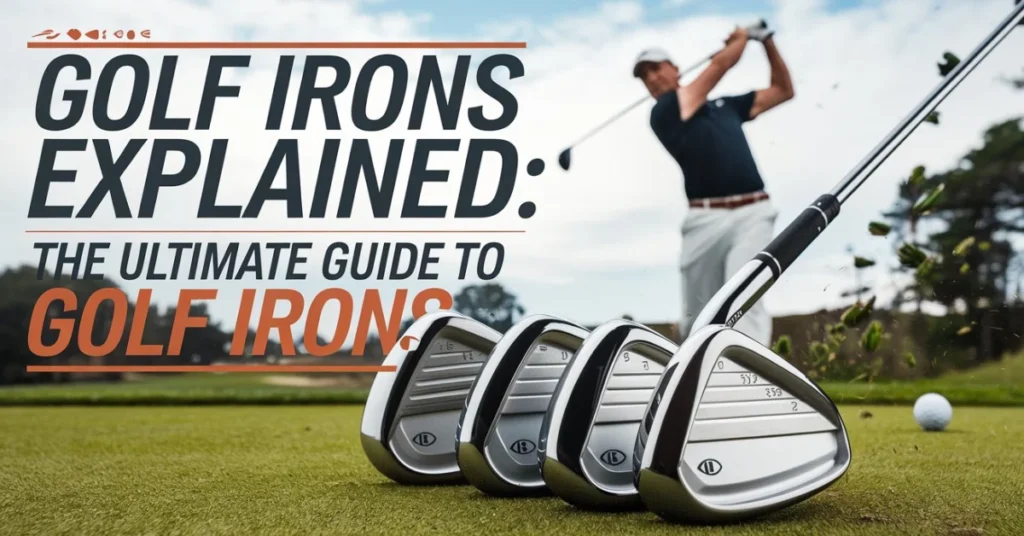
Golf irons are some of the most essential clubs in a Golfer’s Bag, offering a perfect blend of precision, control, and distance.
When Golf Irons explained, their purpose becomes clear: they’re designed for various shots, whether it’s approaching the green, teeing off on shorter holes, or managing tricky recovery situations. Mastering the use of golf irons is key to improving performance and enhancing your overall game.
This article dives deep into the world of golf irons, providing an all-encompassing understanding of the different types of irons, how they are used, and their impact on your game.
We’ll explore the materials used in iron shafts, the design evolution of irons, and how technology has influenced modern-day golf irons.
Whether you are a beginner trying to figure out which irons are best for your game, or a seasoned player looking to refine your understanding, this guide will provide all the information you need. So, without further ado, let’s dive into the comprehensive world of Golf Irons.
Related Article: Tips for Improving Your Iron Game
1. What Are Golf Irons?
Golf irons are a category of golf clubs that are primarily designed for intermediate distance shots. They have thin, angled heads, which differ from the larger heads found on woods.
Irons are most often used when a golfer is less than 200 yards from the green, and their main purpose is to deliver more controlled, accurate shots.
The goal is to hit the ball a specific distance with a trajectory that can either be high, low, or somewhere in between, depending on the type of shot required.

Irons come in a variety of forms, ranging from the long 3-irons to the short 9-irons. These clubs are numbered based on their loft, which is the angle of the clubface relative to a vertical line.
The lower the number, the lower the loft, and the farther the ball will typically travel. Conversely, higher numbers correspond to higher lofts, leading to higher shots but less distance.
Golf irons are key for precision shots when trying to land the ball on the green, approach shots from the fairway, or getting out of roughs and hazards.
Their versatility makes them one of the most frequently used categories of clubs in a golfer’s bag.
Related Article: Best Golf Balls for Beginners 2024
1.1 The Evolution of Golf Irons
Historically, irons were known as “long-nosed woods” because early golf clubs were primarily made of wood. In the early days of golf, players used handcrafted wooden clubs with long shafts and small heads.
The term “iron” eventually evolved when manufacturers began using metal clubheads to create more durable and powerful golf clubs.
Initially, golf irons were forged from a single piece of metal, with early clubs being less refined in terms of their design.
The first sets of irons included long irons and short irons, which were far less forgiving than the cavity-backed irons of today.
In the 20th century, with the rise of steel manufacturing and advanced forging techniques, irons became more sophisticated, allowing players to hit more precise shots with greater ease.
Over the years, significant advancements have been made, including the introduction of cavity-backed irons, hybrid irons, and forged muscle-back irons.
These modern designs cater to players of different skill levels, offering a variety of benefits ranging from distance control to forgiveness on off-center hits.
Related Article: Revolutionize Your Golf Game with the Latest Irons
2. Types of Irons
There are different types of irons, and they are categorized primarily based on their clubhead design, shaft material, and purpose.
These categories of irons provide golfers with options for different types of shots and styles of play.
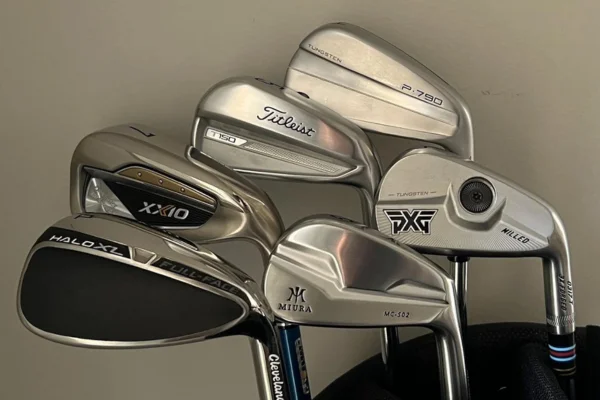
2.1 Long Irons
Long irons consist of the 1-iron, 2-iron, 3-iron, and sometimes the 4-iron.
These clubs are known for their low lofts, which means they produce shots with lower trajectories and longer distances.
Long irons can be challenging to hit, especially for beginners, because they require precise ball striking to achieve optimal results.

As a result, long irons have largely been replaced by hybrids, which are easier to hit while still offering comparable distances.
Related Article: Best Golf Stand Bags 2024
2.2 Mid Irons
Mid irons generally include the 5-iron, 6-iron, and 7-iron. These clubs are designed for approach shots where accuracy is more important than raw distance.
Mid irons have slightly higher lofts than long irons, resulting in higher trajectories and more controlled landings on the green.
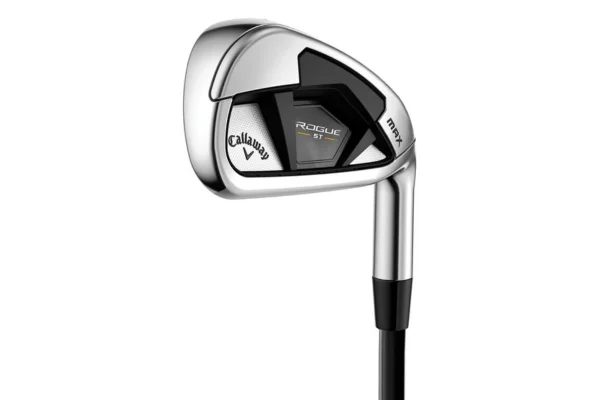
Mid irons are often used for second shots on par-4s and longer par-3s, providing a good balance of distance and control.
2.3 Short Irons
Short irons consist of the 8-iron and 9-iron. These irons are used for short approach shots, typically within 150 yards of the green.
Their higher lofts produce higher ball flights, allowing for better control and more precise landings.
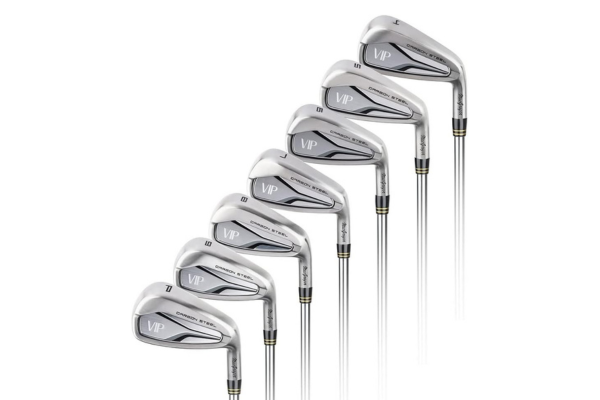
Short irons are excellent for hitting high, soft shots that stop quickly on the green, making them invaluable tools for scoring.
2.4 Wedges
Although not traditionally classified as irons, wedges are an extension of the iron family.
They have the highest lofts and are used for shots requiring extreme precision and control.
Wedges are commonly used for approach shots, bunker shots, and chipping around the green.
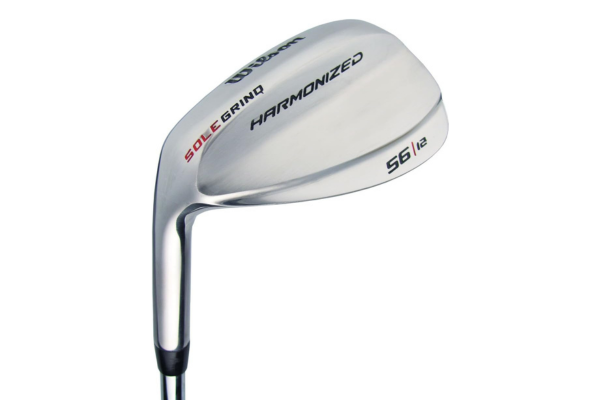
They come in various forms, including pitching, sand, gap, and lob wedges, each serving a specific purpose based on loft and distance.
2.5 Hybrid Irons
Hybrid irons combine the design characteristics of traditional irons and fairway woods.
They are designed to be more forgiving and easier to hit than traditional long irons. Hybrids are especially useful for golfers who struggle with consistency when using long irons.
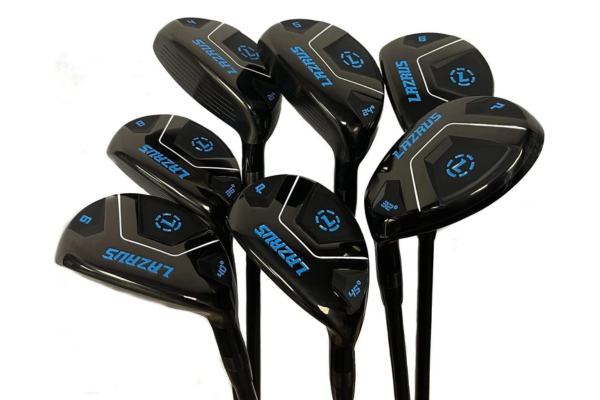
These clubs feature a larger, more rounded clubhead with a lower center of gravity, helping players achieve higher ball flights and more distance with less effort.
3. Material Used in Iron Shafts
The shaft of a golf iron is an essential component that influences a player’s swing, feel, and control over the ball. Iron shafts are made from two primary materials: steel and graphite.
Each material offers different benefits and drawbacks, and selecting the right shaft can have a significant impact on your game.
3.1 Steel Shafts
Steel shafts are the most common choice for irons. They are heavier than graphite shafts and offer more stability, which is beneficial for players with faster swing speeds.
Steel shafts are known for providing better feedback, which means that players can feel the impact of the clubhead against the ball more clearly.
This feedback helps skilled golfers make adjustments to their swings based on how the ball feels off the clubface.
Steel shafts are also more affordable than graphite shafts and are known for their durability. Because of the added weight, steel shafts can help control ball flight and improve accuracy, which is especially important for approach shots where precision is key.
3.2 Graphite Shafts
Graphite shafts are lighter than steel shafts and are more flexible. They are often preferred by players with slower swing speeds, such as senior golfers, women, or those recovering from injuries.
The lighter weight of graphite shafts helps generate more clubhead speed, leading to increased distance without requiring extra effort from the player.
Graphite shafts can also reduce the strain on the body, making them more comfortable to use over long periods of play.
However, because they are more flexible, they may not offer the same level of feedback as steel shafts, and players with faster swing speeds might find them more difficult to control.
3.3 Flexibility and Shaft Flex
The flexibility of an iron shaft is another critical factor that influences performance. Shafts are classified into different categories based on their flexibility, such as Regular, Stiff, Senior, and Ladies.
Players should select a shaft flex that matches their swing speed to maximize distance, accuracy, and control.
- Regular Flex: Suited for players with moderate swing speeds.
- Stiff Flex: Best for players with fast swing speeds who need more control.
- Senior Flex: Designed for older players with slower swing speeds.
- Ladies Flex: Lightweight and more flexible, ideal for women golfers.
Choosing the right shaft flex can improve the overall feel of your iron shots and help you achieve more consistent results.
4. Understanding Golf Iron Loft and Distance
The loft of a golf iron refers to the angle of the clubface relative to a vertical line. The loft determines how high the ball will fly and how far it will travel.
As the number on an iron increases (e.g., from 3-iron to 9-iron), the loft of the club also increases, which results in higher ball flights and shorter distances.
4.1 Golf Iron Loft and Distance Chart
Here’s an example of a typical distance chart for a young, athletic golfer. Keep in mind that individual results may vary based on swing speed, ball striking, and course conditions:
- 3-iron: 200 yards
- 4-iron: 190 yards
- 5-iron: 180 yards
- 6-iron: 170 yards
- 7-iron: 160 yards
- 8-iron: 150 yards
- 9-iron: 140 yards
As you can see, the difference in distance between each club is roughly 10 yards.
These incremental distances allow golfers to select the right club for specific shots and approach different situations on the course with confidence.
4.2 The Role of Loft in Shot Trajectory
The loft of an iron plays a crucial role in determining the trajectory of a golf shot. Lower-lofted irons (e.g., 3-iron, 4-iron) produce lower trajectories, which are useful for longer shots that need to travel farther and roll out upon landing.
Higher-lofted irons (e.g., 8-iron, 9-iron) produce higher trajectories, which are ideal for approach shots where the goal is to stop the ball quickly on the green.
Loft also impacts how the ball reacts to different conditions on the course.
For example, a higher-lofted iron may be more effective when playing into the wind, as the higher trajectory can help reduce the effect of the wind on the ball’s flight.
5. Cavity Back vs. Muscle Back (Blades) Irons
Irons come in two primary designs: cavity back and muscle back (blades).
Both designs have distinct characteristics that cater to different types of golfers, from beginners to professionals.
5.1 Cavity Back Irons
Cavity back irons are the most common type of irons used by amateur golfers.
These irons feature a hollowed-out area on the back of the clubhead, which allows manufacturers to distribute weight around the perimeter of the club.
This design increases the club’s moment of inertia (MOI), making it more forgiving on off-center hits.
The increased forgiveness of cavity back irons means that even if you don’t strike the ball perfectly, you’ll still achieve a decent result.
This makes them ideal for high-handicap and mid-handicap golfers who are looking for more consistency in their shots.
The larger clubhead also inspires confidence at address, making it easier for players to hit solid shots.
5.2 Muscle Back (Blades) Irons
Muscle back irons, also known as blades, are typically used by advanced players and professionals.
These irons have a more traditional design, with a solid back and smaller clubhead.
Blades are forged from a single piece of metal, providing better feel and feedback compared to cavity back irons.
While muscle back irons offer more control and precision, they are less forgiving on off-center hits.
This means that players need to consistently strike the ball in the center of the clubface to achieve the desired results.
Blades are ideal for players who have a repeatable swing and can shape their shots with precision.
5.3 Which Type of Iron is Right for You?
Choosing between cavity back and muscle back irons depends on your skill level, swing consistency, and personal preferences.
If you’re a beginner or intermediate golfer looking for more forgiveness and consistency, cavity back irons are the better choice.
On the other hand, if you’re a low-handicap player who prioritizes control and shot-shaping, muscle back irons may be the right fit.
6. Forged vs. Cast Irons
Another important consideration when choosing irons is whether they are forged or cast. The manufacturing process used to create an iron can affect its feel, performance, and overall characteristics.
6.1 Forged Irons
Forged irons are made from a single piece of metal that is heated and shaped into the desired clubhead.
The forging process results in a more compact and dense clubhead, which provides better feel and feedback to the player.
Forged irons are typically associated with muscle back designs, although some cavity back irons are also forged.
Because of the superior feel and feedback, forged irons are often preferred by advanced players who want to fine-tune their shots.
However, they are generally less forgiving than cast irons and may not offer as much forgiveness on off-center hits.
6.2 Cast Irons
Cast irons are made using a casting process, where molten metal is poured into a mold to create the clubhead.
This process allows for more intricate designs, such as cavity back irons with perimeter weighting.
Cast irons are generally more forgiving and are popular among mid-handicap and high-handicap golfers.
While cast irons may not provide the same level of feel as forged irons, they offer greater forgiveness and are more affordable, making them a popular choice for recreational players.
7. Irons and Distance: How to Maximize Your Yardage
Maximizing your distance with irons requires a combination of proper technique, club selection, and understanding the factors that affect ball flight.
Here are some key tips to help you get the most out of your irons:
7.1 Swing Speed and Ball Striking
Your swing speed and ability to consistently strike the ball in the center of the clubface are crucial in determining how far you hit your irons.
Faster swing speeds generate more clubhead speed, which translates to longer distances.
However, even if you have a slower swing speed, you can still achieve good distance by focusing on solid ball striking and optimizing your club’s loft.
7.2 Club Selection
Choosing the right club for each shot is essential for maximizing your distance. Understanding how far you hit each iron and selecting the appropriate club based on your distance to the green can help you make more accurate shots.
Don’t be afraid to take an extra club if you need more distance or a shorter club if you want more control.
7.3 Course Conditions
The condition of the course can also affect how far you hit your irons. For example, playing on a firm, fast fairway may result in more roll after the ball lands, while playing on a soft, wet course may reduce roll and require more carry distance.
Adjust your club selection and shot strategy based on the conditions of the course to optimize your distance.
8. Conclusion: Understanding and Mastering Golf Irons
Golf irons are one of the most important categories of clubs in any golfer’s bag. With their variety of lofts, designs, and purposes, irons offer a wide range of shot-making capabilities.
Whether you’re hitting a long iron from the fairway, a mid-iron approach to the green, or a short iron to set up a birdie putt, understanding how to use these clubs effectively is essential for success on the course.
From choosing the right shaft material to understanding the differences between cavity back and muscle back designs, selecting the right irons for your game requires careful consideration.
By mastering your irons, you can improve your accuracy, consistency, and overall performance on the golf course.
In the end, the best way to get the most out of your irons is through practice and experimentation.
Try different types of irons, work on your swing, and pay attention to how each club feels and performs.
With time and experience, you’ll develop the confidence and skill to use your irons to their full potential, making you a more well-rounded and successful golfer.
